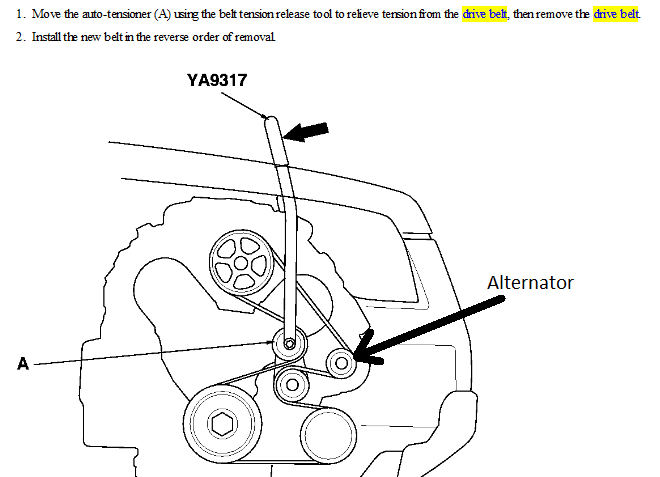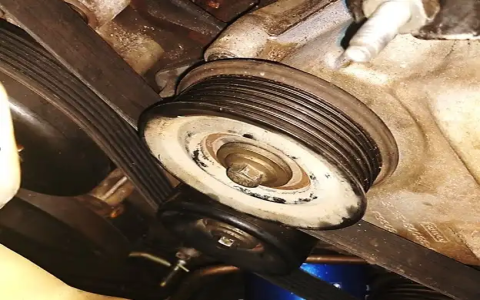Symptoms of Serpentine Belt Issues
For the 2003 Honda Pilot, common symptoms include squealing or chirping noises, dimming lights, battery light illumination, power steering loss, or AC failure. These indicate potential serpentine belt problems such as slippage, wear, or misalignment.
Locating and Using the Belt Routing Diagram
The serpentine belt routing diagram is typically found under the hood near the radiator support or in the owner's manual. For the 2003 Honda Pilot, this diagram shows the belt path across pulleys: crankshaft, alternator, power steering pump, AC compressor, and tensioner. Use it to visually identify correct routing during inspections or replacements.
Troubleshooting Common Problems
- Inspect visually: Look for cracks, fraying, or glazing on the belt surface using a flashlight.
- Check tension: Press midway between pulleys; excessive slack (over 1/2 inch deflection under pressure) causes slippage.
- Verify pulleys: Spin each pulley to identify seized bearings or misalignment indicated by wobbling.
- Assess accessories: If a specific component fails, the belt may be damaged due to underlying pulley issues.
Fast Fix Steps
- Relieve tension: Turn the tensioner pulley with a wrench to loosen the belt for removal or adjustment.
- Replace if damaged: Install a new serpentine belt by routing it correctly per the diagram. Ensure it seats fully on pulleys.
- Retension: Release the tensioner to apply proper pressure; belt deflection should be minimal.
- Test operation: Start the engine and listen for noise; confirm accessories like alternator and AC function correctly.
Preventive Maintenance Tips
Inspect the serpentine belt every 30,000 miles or annually. Replace intervals are typically 60,000-100,000 miles to prevent failures. Address pulley or tensioner wear promptly to avoid belt damage.


